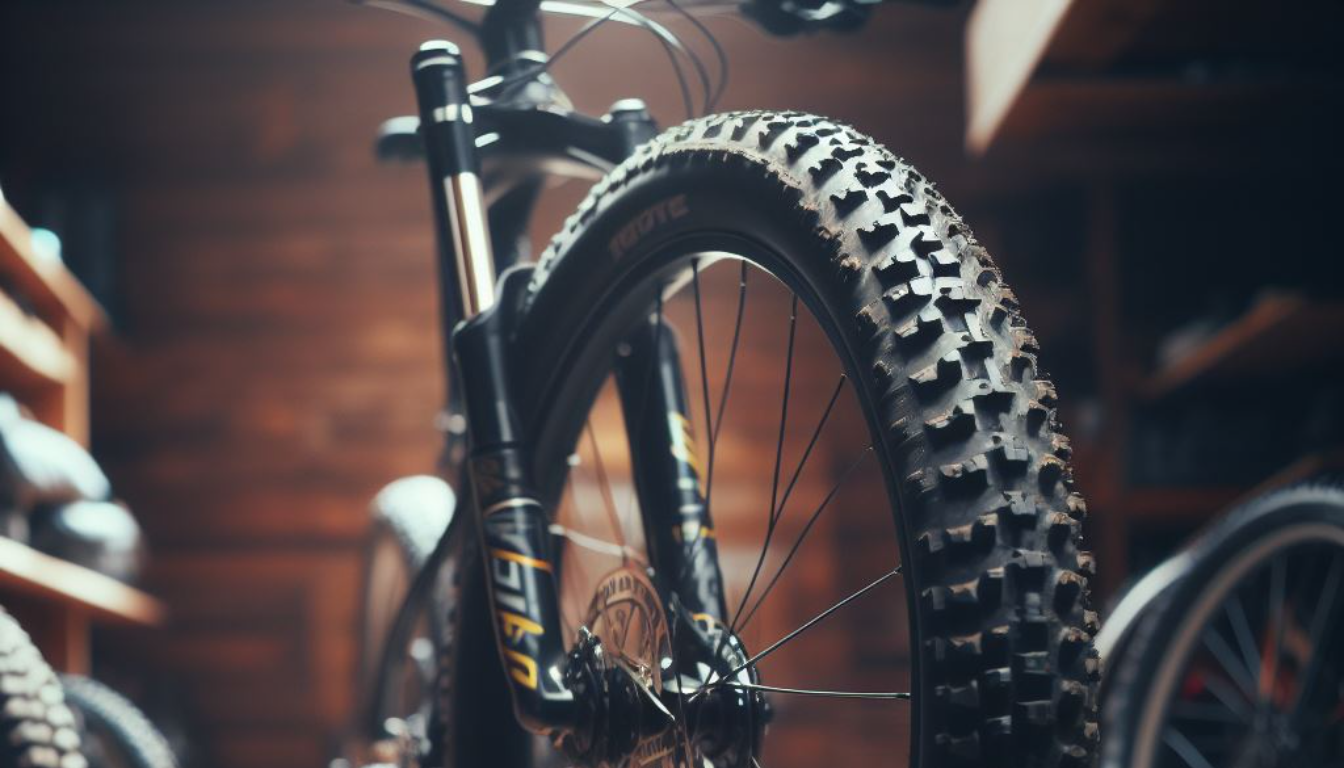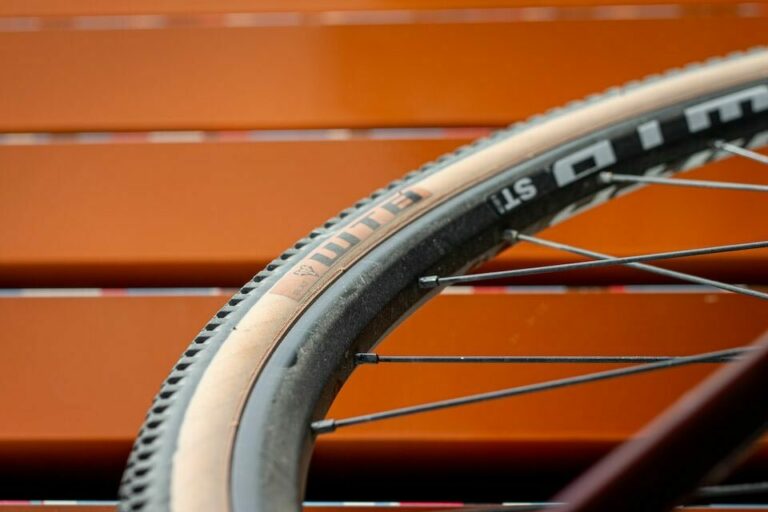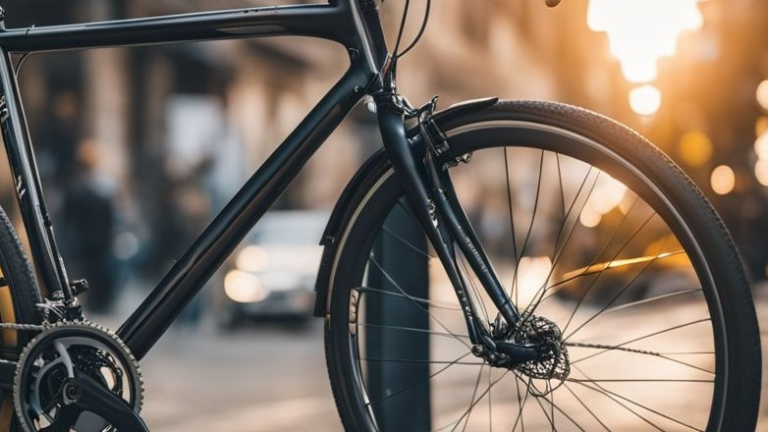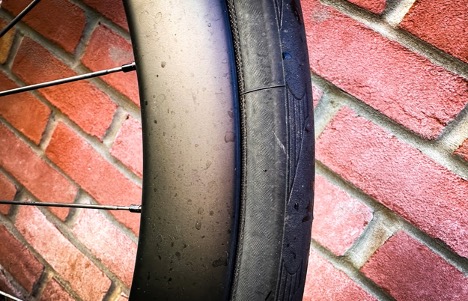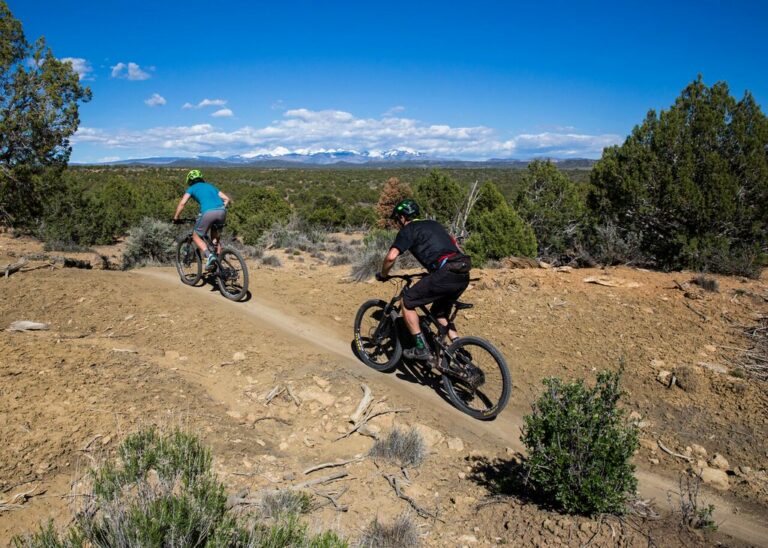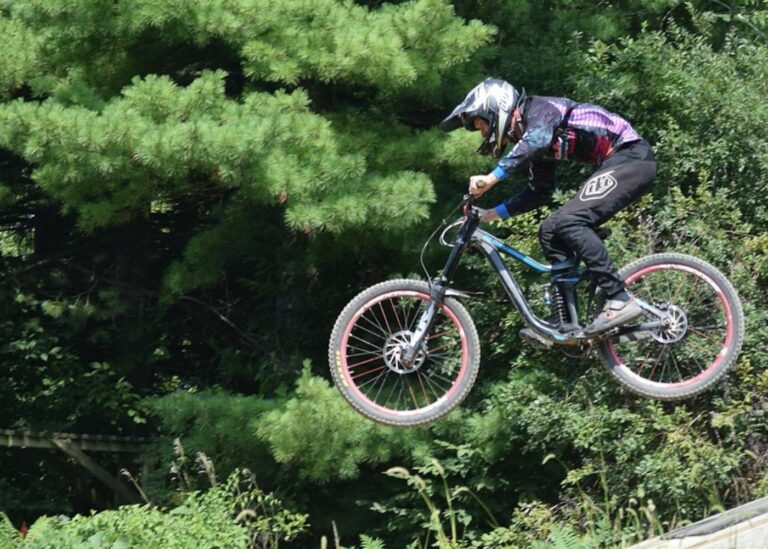Best Mountain Bike Inner Tubes: Top Picks for 2023
An important component of any mountain bike is its tire system, specifically the inner tubes. The right mountain bike inner tubes can significantly enhance the riding experience, providing the perfect balance between comfort, speed, and durability.
When choosing the ideal inner tubes for a mountain bike, key features such as the type of valve, puncture resistance, and weight, play an important role.
After extensive research and testing, we have compiled a list of the best mountain bike inner tubes to help make your decision easier and provide a smooth, enjoyable ride on any trail.
Best Mountain Bike Inner Tubes
Discover our top picks for the best mountain bike inner tubes available on the market today.
Our selection will ensure enhanced performance, durability, and a smoother ride on your adventures.
| Product Name | Best For | Buy on Amazon |
|---|---|---|
| Hapleby 2PCS Premium Bike Tubes | Durability and Puncture Resistance | Buy on Amazon |
| Kenda Inner Tubes Black for MTB Mountain Bike | Budget-Friendly Quality | Buy on Amazon |
| Slime Bike Inner Tube with Puncture Sealant | Extra Puncture Protection | Buy on Amazon |
| Hapleby Premium Bike Tubes Compatible for 27.5 Inch Mountain Bikes | 27.5-inch Mountain Bikes | Buy on Amazon |
| Continental 26″ x 1.75-2.5 Mountain Bike Inner Tube – Schrader 40mm Valve (Set of 3) | Versatility and Reliability | Buy on Amazon |
1. Hapleby 2PCS Premium Bike Tubes
These Hapleby Premium Bike Tubes are a remarkable choice for mountain bike enthusiasts seeking durability and convenience in their inner tubes.
Pros
- Reinforced valve design
- Thicker butyl rubber for added puncture resistance
- Package includes additional accessories (2 valve caps, 2 tire levers, and 2 tubes)
Cons
- Slightly thicker sidewall can add weight
- May have an unusual odor when releasing air
- Only compatible with 26-inch tires
After trying the Hapleby 2PCS Premium Bike Tubes on our mountain bikes, we can confidently say that these inner tubes are among the best we have experienced. The reinforced valve design addresses a common issue faced by cyclists – air leaks and tears at the interface between the valve stem and the tube. With 70% of leaks and tears occurring at this spot, it’s great to see these tubes specifically designed to combat this problem.
The thicker butyl rubber is another feature we appreciated. As the sidewall thickness of these tubes is 1.12mm, compared to the conventional 0.75–0.98mm, we found them to be more puncture-resistant and able to maintain strong air tightness. This upgraded thickness provides a smoother ride as the tubes better absorb shocks from bumps and hollows, which added to our overall comfort during our ride.
One bonus we discovered while unpacking the Hapleby tubes was the inclusion of additional accessories, such as valve caps and tire levers. While not a game-changing addition, these extras surely help save time while mounting or unmounting the tubes and make the whole process more convenient.
We did notice a few drawbacks with these tubes. The increased sidewall thickness, while excellent for durability and shock absorption, also adds a bit of extra weight to the tubes. Some riders might prefer a lighter tube for faster speeds or easier handling.
We found that the tubes have a slightly unpleasant odor when releasing air, which could be off-putting for some users. These tubes are only compatible with 26-inch tires, so they won’t be suitable for all mountain bike users.
The Hapleby 2PCS Premium Bike Tubes come with great features like the reinforced valve design, thicker butyl rubber, and handy additional accessories, making them an excellent option for mountain bike riders in need of reliable, puncture-resistant tubes.
Despite minor drawbacks like added weight and limited tire compatibility, we believe these tubes provide impressive value and a smoother ride for those seeking top-notch performance.
2. Kenda Inner Tubes Black for MTB Mountain Bike
We highly recommend these durable Kenda inner tubes for your mountain bike adventures.
Pros
- Great price for the quality
- Compatible with 26″ x 1.90″ to 2.125″ tires
- Easy to install Schrader valves
Cons
- Bulk packaged, no retail packaging
- May not be suitable for other bike types
- Occasional manufacturing flaws
Having recently ridden our mountain bikes equipped with Kenda’s 26×1.90/1.95/2.10/2.125 Schrader Valve Inner Tubes, we can attest to their durability and performance. Understanding the effect of wheel rim width on rolling resistance and speed in mountain biking can complement the discussion on the importance of inner tube selection.
The rubber material is strong, providing us with the confidence we need when tackling rough off-road terrain. These tubes are ideal for mountain biking enthusiasts who want reliable equipment without breaking the bank.
These inner tubes fit tire sizes 26×1.90″ to 2.125″, ensuring compatibility with a wide range of mountain bike tires. The Schrader valve design is user-friendly, similar to car tire valves, making inflation and deflation a breeze. We found the installation process to be simple and quick, allowing us to get back on the trail in no time.
It’s worth noting that these tubes come in bulk packaging without any retail boxes, which may not appeal to some buyers.
They may not be the best choice for those with bikes that require different tire sizes or valve types. In rare cases, we have come across tubes with manufacturing flaws, though the majority of Kenda’s products are of high quality.
3. Slime Bike Inner Tube with Puncture Sealant
Experience enhanced confidence on the trails with this self-sealing Slime Bike Inner Tube, perfect for mountain bikers seeking extra protection.
Pros
- Extra strong tubes with Slime inside
- Instantly seals punctures up to 1/8″ (3mm)
- Environmentally friendly and safe
Cons
- May add some weight to the wheel
- Not 100% puncture-proof
- Limited to Schrader valve compatibility
We recently tried out the Slime Bike Inner Tube with Slime Puncture Sealant and were quite impressed with its performance. These tubes are filled with Slime, providing an additional layer of protection against punctures and flats. The unique Slime Tube Sealant works to instantly seal punctures up to 1/8″, thanks to its Fibro-Seal Technology, making it perfect for mountain biking escapades.
We installed the Slime Bike Inner Tube like any other traditional inner tube and found it quite easy to do so. The Schrader valve worked well with our compatible pumps, and the instructions provided inside the pack were clear and concise. It’s important to note that this tube is primarily designed for Schrader valves, so cyclists with different valve types might need to look for alternatives.
One thing we appreciated was the environmentally friendly aspect of the Slime. The tube sealant is non-toxic, non-corrosive, non-hazardous, non-flammable, and water-soluble, making it safe for both us and the environment. Consider the study on helmet use and safety in young recreational sledders for further discussion on the importance of safety and regulations in mountain biking.
We noticed that these tubes added some weight to our bike wheels, which could be a concern for riders seeking optimal performance.
While the Slime greatly lessened the chance of experiencing a flat, no solution is completely puncture-proof. We did encounter a few instances where a puncture exceeded the sealing capacity, reminding us to always be prepared with a spare tube or patch kit.
Slime Bike Inner Tube with Slime Puncture Sealant offers a solid solution for mountain bikers seeking extra protection against flats. The environmentally friendly sealant technology and its ease of installation make it a worthy addition to your biking arsenal, despite the slight increase in weight and occasional limitations in puncture protection.
4. Hapleby Premium Bike Tubes Compatible for 27.5 Inch Mountain Bikes
These Hapleby bike tubes are worth considering for their durability, reinforced valve design, and comprehensive package.
Pros
- Thicker butyl rubber for better puncture resistance
- Reinforced valve design minimizes leaks
- Package includes valve caps, tire levers, and two tubes
Cons
- Not the lightest tubes available
- May be challenging for beginners to install
- Limited to 27.5-inch mountain bikes only
We recently tried out the Hapleby bike tubes on our 27.5-inch mountain bikes and were impressed with the robust, thick butyl rubber construction.
These tubes are designed to withstand some tough rides, thanks to their 1.12mm sidewall thickness, which is above the market average. This extra thickness adds to both puncture resistance and air tightness, providing a smoother ride and fewer pit stops for repairs.
One thoughtful design aspect we noticed is the reinforced valve, considering that 70% of tube leaks and tears occur at the interface between the valve stem and the tube. This reinforcement adds to the overall durability of the tubes and reduces the chances of dealing with the dreaded flat tire mid-trail.
The package comes with two tubes, two valve caps, and two tire levers, all at a competitive price. The inclusion of tire levers makes installing and unmounting the tubes a quicker process, although beginners may find it a bit challenging. Do note that these tubes are exclusively for 27.5-inch mountain bikes, so they won’t accommodate other sizes.
Hapleby bike tubes offer value for money and reliability, especially for serious mountain bikers who prioritize puncture resistance, air retention, and durability. They may not be the best fit for those seeking lightweight options or who have limited experience in tube installation.
5. Continental 26″ x 1.75-2.5 Mountain Bike Inner Tube – Schrader 40mm Valve (Set of 3)
These durable and versatile inner tubes are perfect for avid mountain bikers seeking a reliable and long-lasting option.
Pros
- High-quality material
- Compatible with various tire widths
- Convenient 40mm Schrader valve
Cons
- A bit heavier than some competitors
- Rare seam splitting incidents
- Limited stem length availability
We recently had the opportunity to try out the Continental 26″ x 1.75-2.5 Mountain Bike Inner Tubes, and we were quite impressed with their performance. These inner tubes are made of a high-quality rubber material that provides excellent durability and resistance against punctures. The tubes are designed for 26″ mountain bike wheels and can comfortably fit tire widths ranging from 1.75″ to 2.5″. This versatility is a great advantage when switching between different tire sizes on our mountain bikes.
Another notable feature of these Continental inner tubes is the 40mm Schrader valve. We found it easy to access and inflate the tubes with no issues. The valve also features a removable inner core, which allows for more convenient maintenance if needed.
One downside we experienced with these tubes is that they are slightly heavier compared to some competitors. This may be a concern for riders looking to reduce their bike’s overall weight. The thicker material does contribute to their puncture resistance and longevity, making it a worthy trade-off for many riders.
We also came across a few rare cases where the tubes could split along the seam. While this did not happen to us, it’s worth noting that no product is completely perfect, and occasional issues may arise.
We noticed that finding these tubes with a specific stem length can be a bit challenging. Some riders may require different lengths, so having more options would be beneficial.
The Continental 26″ x 1.75-2.5 Mountain Bike Inner Tubes are a solid option for mountain bike riders seeking a reliable and durable option. The compatibility with a range of tire widths and the convenient 40mm Schrader valve make these tubes a worthwhile investment.
Buying Guide
When looking for the best mountain bike inner tubes, there are several factors to consider. We’ve put together a brief guide to help you find the perfect fit for your bike and riding style.
Size and Valve Type
First, it’s essential to choose the correct tube size for your bike’s wheel diameter and tire width. Look for a tube that matches your bike’s specifications, whether it’s 26 inches, 27.5 inches, or 29 inches, and ensure that it accommodates your tire width.
Next, determine whether your bike uses Presta or Schrader valves and select a tube with the matching type of valve.
Material
Mountain bike inner tubes are typically made of either butyl rubber or latex.
Butyl rubber tubes are more common, affordable, and puncture resistant, although slightly heavier.
Latex tubes on the other hand are more likely to puncture and need more frequent air pressure checks, they are lighter and provide a smoother ride.
Thickness
Inner tube thickness options range from standard, lightweight, to heavy-duty. The right choice depends on your riding style and the terrain you plan to tackle:
- Standard tubes are suitable for moderate trail riding and recreational use.
- Lightweight tubes are a good option for riders looking to reduce weight and improve performance but may be less puncture resistant.
- Heavy-duty tubes provide enhanced durability and are ideal for aggressive riding on rough terrain or for those prone to frequent punctures.
Puncture Protection
Many riders opt for inner tubes with puncture protection features, such as sealant or reinforced sidewalls. These enhancements can help reduce the risk of flats but may come with added weight or cost.
- Sealant-lined tubes: come prefilled with a liquid sealant that can plug punctures while riding.
- Reinforced materials: incorporate extra layers of rubber or other materials to help resist punctures.
By considering these features and your riding preferences, you’ll be better equipped to choose the best mountain bike inner tube that meets your needs.
Frequently Asked Questions
How to choose the right size of mountain bike inner tube?
To choose the right size mountain bike inner tube, first determine the diameter of your wheel and the width of your tire. These measurements can be found on the tire’s sidewall, usually written as a sequence of numbers, such as “26 x 2.1” or “29 x 2.3.”
The first number represents the wheel diameter in inches, and the second number corresponds to the tire width, also in inches. When purchasing an inner tube, match these numbers with the range specified on the tube’s packaging.
What inner tubes do professional cyclists use for mountain biking?
Professional cyclists tend to use high-quality, lightweight tubes with low rolling resistance. Latex inner tubes are commonly used by professionals since they offer superior performance and a supple feel on the trail.
These tubes can be pricier and require more maintenance compared to butyl rubber tubes. Keep in mind that professionals may have different preferences, and the optimal choice for you may vary depending on your riding style and goals.
Are certain brands of MTB inner tubes better than others?
There are several reputable brands that manufacture MTB inner tubes, including Continental, Schwalbe, Michelin, and Maxxis. While the performance and quality of tubes may vary from brand to brand, it’s essential to prioritize your specific needs and preferences over the brand name.
Some brands may have a reputation for producing more puncture-resistant tubes, while others might focus on weight savings or ride comfort. Look for reviews and recommendations from trusted sources to help guide your decision.
How do gravel bike inner tubes compare to mountain bike inner tubes?
Gravel bike inner tubes have a few differences compared to those designed for mountain bikes.
They’re often narrower since gravel tires typically have less width. Some gravel bike inner tubes have slightly thinner walls to save weight since they’re usually ridden on less rugged terrain than mountain bikes.
Materials such as butyl rubber or latex are still commonly used. When choosing an inner tube for your gravel bike, make sure to select the correct size, considering both diameter and width and opt for a tube designed for the type of terrain you’ll be riding.

